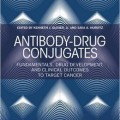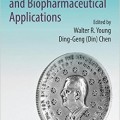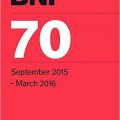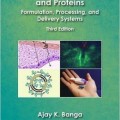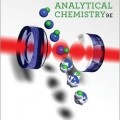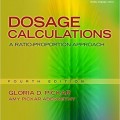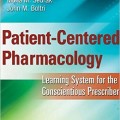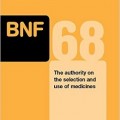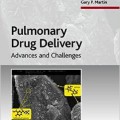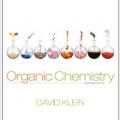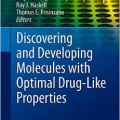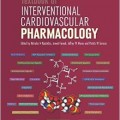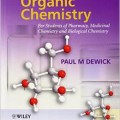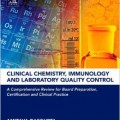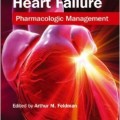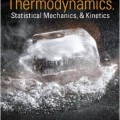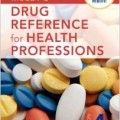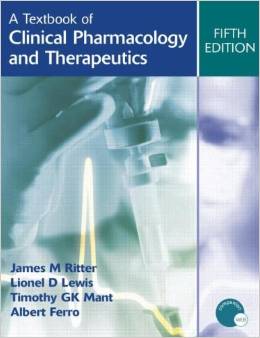دانلود کتاب برنامه ها و تحقیقات کمومتریکس: QSAR در شیمی دارویی
Chemometrics Applications and Research: QSAR in Medicinal Chemistry, 1ed
This important new book provides innovative material, including peer-reviewed chapters and survey articles on new applied research and development, in the scientifically important field of QSAR in medicinal chemistry.
QSAR is a growing field because available computing power is continuously increasing, QSAR’s potential is enormous, limited only by the quantity and quality of the available experimental input, which are also continuously improving. The number of possible structures for the design of new organic compounds is difficult to imagine, and QSAR helps to predict their activities even before synthesis.
The book provides a wealth of valuable information and:
• Presents an overview of recent developments in QSAR methodologies along with a brief history of QSAR
• Covers the available web resource tools and in silico techniques used in virtual screening and drug discovery processes, compiling an extensive review of web resources in the following categories: databases related to chemical compounds, drug targets, and ADME/toxicity prediction; molecular modeling and drug designing; virtual screening; pharmacophore generation; molecular descriptor calculation software; software for quantum mechanics; ligand binding affinities (docking); and software related to ADME/toxicity prediction
• Reviews the rm2 as a more stringent measure for the assessment of model predictivity compared to traditional validation metrics, being specifically important since validation is a crucial step in any QSAR study
• Presents linear model improvement techniques that take into account the conformation flexibility of the modeled molecules
• Summarizes the building processes of four different pharmacophore models: common-feature, 3D-QSAR, protein-, and protein-ligand complexes
• Shows the role of different conceptual density functional theory based chemical reactivity descriptors, such as hardness, electrophilicity, net electrophilicity, and philicity in the design of different QSAR/QSPR/QSTR models
• Reviews the use of chemometrics in PPAR research highlighting its substantial contribution in identifying essential structural characteristics and understanding the mechanism of action
• Presents the structures and QSARs of antimicrobial and immunosuppressive cyclopeptides, discussing the balance of antimicrobial and haemolytic activities for designing new antimicrobial cyclic peptides
• Shows the relationship between DFT global descriptors and experimental toxicity of a selected group of polychlorinated biphenyls, exploring the efficacy of three DFT descriptors
• Reviews the applications of Quantitative Structure-Relative Sweetness Relationships (QSRSR), showing that the last decade was marked by an increase in the number of studies regarding QSAR applications for both understanding the sweetness mechanism and synthesizing novel sweetener compounds for the food additive industry
The wide coverage makes this book an excellent reference for those in chemistry, pharmacology, and medicine as well as for research centers, governmental organizations, pharmaceutical companies, and health and environmental control organizations.
Review
“This concisely written and up-to-date book is an asset for QSAR, and it will create great interest among the new entrants into the field. It covers topics from 2D-to 6D-QSAR and allied topics in good details with high clarity. The book deserves high place on the desks of beginners and practicing professionals.”
―Vijay Masand, PhD, Department of Chemistry, Vidya Bharati College, Amravati, Maharashtra, India
About the Author
Andrew G. Mercader, PhD, studied physical chemistry at the Faculty of Chemistry of La Plata National University (UNLP), Buenos Aires, Argentina, from 1995–۲۰۰۱. Afterwards he joined Shell Argentina to work as the luboil, asphalts and distillation process technologist, as well as the safeguarding and project technologist, from 2001–۲۰۰۶. Dr. Mercader’s PhD work on the development and applications of QSAR/QSPR theory was performed at the Theoretical and Applied Research Institute at La Plata National University (INIFTA) from 2006–۲۰۰۹. After that he obtained a post-doctoral scholarship to work on theoretical-experimental studies of biflavonoids, at IBIMOL (ex PRALIB), Faculty of Pharmacy and Biochemistry, University of Buenos Aires (UBA), from 2009–۲۰۱۲. He is currently a member of the Scientific Researcher Career in the Argentina National Research Council at INIFTA.
Pablo R. Duchowicz, PhD, studied physical chemistry from 1996–۲۰۰۳ at the Faculty of Exact Sciences, Chemistry Department of La Plata National University (UNLP), Buenos Aires, Argentina. His PhD work on “Physicochemical and Biological Applications of the QSPR” was performed at the Research Institute of Theoretical and Applied Physical-Chemistry (INIFTA), located at La Plata, under the supervision of Professors Eduardo A. Castro and Francisco M. Fernández, from 2003–۲۰۰۵. In 2006 he obtained a post-doctoral scholarship to work on “ab initio Direct Kinetics and Molecular Dynamics Studies for Halogenated Germanes and Related Species” at INIFTA, under the supervision of Dr. Carlos J. Cobos and Professor Adela Croce. Since 2007, he has been a member of the Scientific Researcher Career of the National Research Council of Argentina, performing research work at INIFTA.
P. M. Sivakumar, PhD, is a foreign postdoctoral researcher (FPR) at RIKEN, Wako Campus, in Japan. RIKEN is Japan’s largest comprehensive research institution renowned for high-quality research in a diverse range of scientific disciplines. He received his PhD from the Department of Biotechnology, Indian Institute of Technology Madras, India. He is a member of the editorial boards of several journals and has published papers in international peer-reviewed journals and professional conferences. His research interests include drug discovery, QSAR, and biomaterials.
Contents
Chapter 1: Overview and Recent Advances in QSAR Studies
Chapter 2: Software and Web Resources for Computer-Aided Molecular Modeling and Drug Discovery
Chapter 3: The rm2 Metrics for Validation of QSAR/QSPR Models
Chapter 4: Considering the Molecular Conformational Flexibility in QSAR Studies
Chapter 5: Practical Aspects of Building, Validation and Application of 3D-Pharmacophore Models
Chapter 6: Application of Conceptual Density Functional Theory in Developing QSAR Models and their Usefulness in the Prediction of Biological Activity and Toxicity of Molecules
Chapter 7: Synopsis of Chemometric Applications to Model PPAR Agonism
Chapter 8: Antimicrobial and Immunosuppressive Activities of Cyclopeptides as Targets for Medicinal Chemistry
Chapter 9: On the Use of Quantitative Structure Activity Relationships and Global Reactivity Descriptors to Study the Biological Activities of Polychlorinated Biphenyls
Chapter 10: Applications of Quantitative Structure-Relative Sweetness Relationships in Food Chemistry
Chapter 11: QSAR Studies of 1, 4-Benzodiazepines as CCKA Antagonist
Chapter 12: Docking-Based Scoring Parameters Based QSAR Modeling on a Data Set of Bisphenylbenzimidazole as Non-Nucleoside Reverse Transcriptase Inhibitor
Chapter 13: Potential Anti-Inflammatory and Anti-Proliferative Agents and-lh-Isochromen-l-Ones and their Thio Analogues and their QSAR Studies
Chapter 14: QSAR Studies on Dihydrofolate Reductase Enzyme: From Model to Biological Activity
لینک کوتاه : https://bookbaz.ir/?p=32444
نویسنده : Andrew G. Mercader , Pablo R. Duchowicz
ناشر : Apple Academic Press
سال انتشار : 2016
زبان کتاب : انگلیسی
نوع فایل : PDF
تعداد صفحات : 446
(ISBN) شابک : 1771881135
قیمت کتاب درآمازون : $169.95
حجم فایل : 48 MB

















